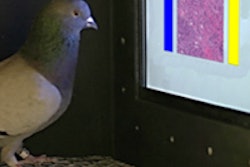
If you could build a better PACS workstation, what would you include? A pair of researchers tackled that question in a new article published online February 9 in the Journal of the American College of Radiology.
The question isn't just an academic exercise. The growing volume of medical images is putting ever-increasing stress on radiologists, who are now faced with the interpretation of up to 100,000 medical images per day, according to Dr. Murray Reicher, radiologist and chief medical officer at Merge Healthcare, and Jeremy Wolfe, PhD, head of the Visual Attention Lab at Brigham and Women's Hospital.
This added stress is contributing to radiologist burnout, they wrote. Fortunately, technology could help radiologists cope with the data deluge through a series of tweaks to PACS workstation software that aren't that far from the realm of possibility (JACR, February 9, 2016).
Perceptual design
Many of the suggestions in Reicher and Wolfe's paper derive from what's called perceptual design, an emerging field in which design is based on a scientific understanding of human perception and cognition, in particular as applied to human-computer interaction.
In the case of radiology, PACS software designers can use perceptual design to create low-cost innovations that take advantage of the strengths of human perception, as well as compensate for its weaknesses, the authors wrote. They provide a number of examples of simple enhancements based on perceptual design that could improve the productivity, performance, and job satisfaction of radiologists, such as those described below.
Switch to image toggling
In the traditional, film-based method of image interpretation, current and prior images were displayed side by side on a lightbox. This paradigm persists today, even with the use of stack mode, a PACS-based technique in which radiologists drill through a sequence of still images as a movie.
But current and prior images are still viewed side by side, and when radiologists move their eyes back and forth, it can be more difficult to find pathology. Instead, Reicher and Wolfe suggest reading images in a toggled or flickering mode, in which current and prior images are interleaved in the same stack. This way, interesting features can be examined without having to move the eye. Such a technique was used to find Pluto, they noted.
Address the prevalence problem
Studies have shown that human performance declines when interpreting large volumes of data in which items of interest occur at low rates of probability. Called the prevalence effect, it's been known to occur in fields as diverse as mammography screening today to radar monitoring in World War II.
Radiologists have been shown to be more accurate at detecting cancer when it's in an enriched, high-prevalence stack of cases, versus when they are reading low-prevalence screening exams. Reicher and Wolfe propose a model in which radiologists about to begin a screening session quickly evaluate a test set of cases as a sort of "perceptual tune-up." The process could even be "gameified" with radiologists competing with themselves or one another.
Follow eye tracking
Image perception researchers have been performing studies for decades that track the eye movements of radiologists, but this hasn't translated into actual products that are being used for interpretation. Reicher and Wolfe believe now could be the time.
As eye tracking becomes less intrusive, it could become "an integrated part of future workstations," they believe. For example, a workstation that's aware of the eye movements of its user could be programmed to automatically magnify or highlight a region the user is focusing on, or learn to develop hanging protocols for a radiologist after monitoring his or her oculomotor behavior, they wrote.
Go with the flow
In their final suggestion, Reicher and Wolfe cite research on mental flow, a state of enjoyable concentration that leads to better performance as users focus and feel a sense of control and mastery -- a feeling increasingly difficult to achieve in today's overloaded environment.
PACS workstations could help restore flow to radiologists' workdays by becoming their collaborator or assistant, Reicher and Wolfe posit. Workflow management software could assign imaging exams to radiologists based on skill or preference, while also managing interruptions to protect focus.
For example, an automated messaging system might only interrupt radiologists when they are between exams, or route technologists' phone calls to the radiologist who has been reading for more than an hour, giving them a needed break. And in a nod to big data, a collaborative workstation could compile data from electronic medical records and the literature to help radiologists arrive at a diagnosis.
Reicher and Wolfe conclude by noting that major advances in workstation design can be achieved if the growing knowledge in perceptual and cognitive science is paired with the intuition and expertise of radiologists.
"These advances will be different from the development of a new image reconstruction algorithm or a new imaging modality," they wrote. "However, just as we should not stop seeking new technological breakthroughs, we should not stop improving the ways in which humans interact with that technology."



















